The use of novel and space-age materials in high-end watches is always fun to follow as a spectator, but it’s far more appreciated when their practical benefits might sometime soon be used in watches that a broader segment can enjoy. That’s rarely the case, but one watch that piqued my interest in this way was the transparent case back Panerai LAB-ID Luminor 1950 Carbotech 3 Days PAM 700 copy watches (debuted here). Utilizing an array of carbon composites and low-friction components that run without the need for any kind of liquid lubrication, the result is a watch that guarantees 50 years of service-free operation. There’s no way to know if the guarantee will hold but, limited in production to only 50 pieces, I can’t imagine that 50 Panerai enthusiasts and collectors, aka “Paneristis,” won’t want to engage in this long-term experiment with the brand.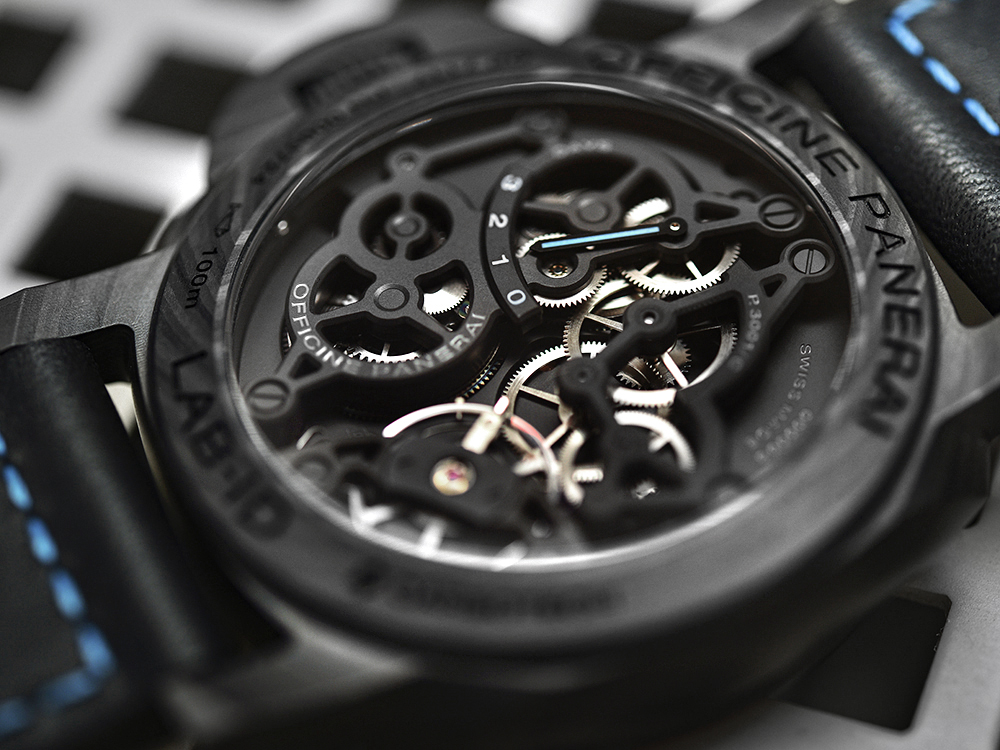
Alongside the Panerai BMG-TECH which also centers around the use of fancy, high-tech materials, the black rubber straps Panerai LAB-ID Luminor 1950 Carbotech 3 Days PAM 700 fake watches demonstrates the capabilities of the Laboratorio di Idee (LAB-ID), which operates as Panerai’s R&D department based in Neuchâtel. Like some of Panerai’s previous timepieces (such as this Luminor Submersible 1950), the watch utilizes a material known as Carbotech that serves on both functional and aesthetic levels. While I can’t dispute the use of carbon composites for the sake of their mechanical advantage, I can’t help but notice just how well the deep shaded layers of the Carbotech interact with the minimal blue luminous dial and crystal Panerai incorporated here.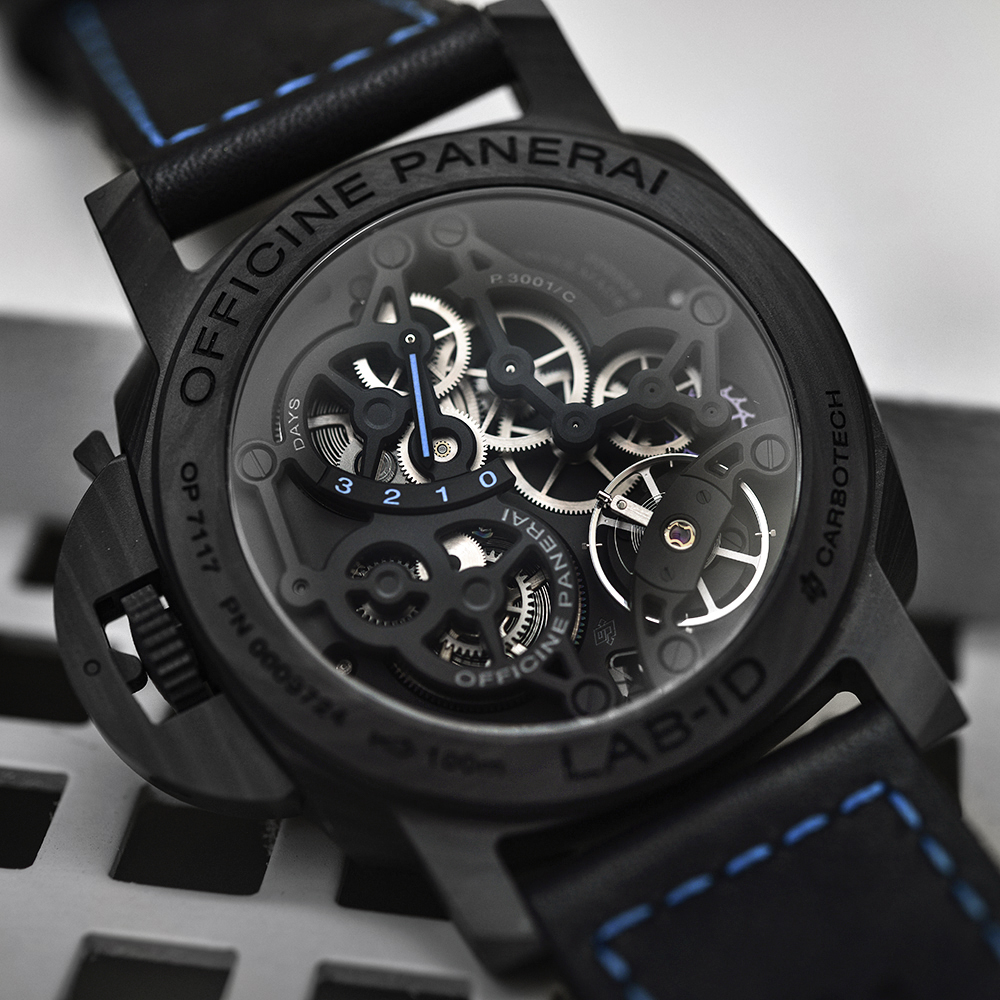
There are four innovations Panerai utilized in developing its caliber P.3001/C, starting with a set of mainplates and bridges constructed entirely out of tantalum-based ceramic, removing the need for any kind of lubrication. This oil-free concept also moves into the DLC-coated silicon escapement, which is second in the list of innovations. Thirdly, with the kind of ceramic and DLC use we see here, Panerai has eliminated the need for traditional jewels. Therefore, the movement uses a set of just four DLC-coated jewels that remove the need to lubricate the Incabloc shock system. Finally, the two mainspring barrels also operate without any grease or oil and do so with a multi-layer coating and a final layer of DLC.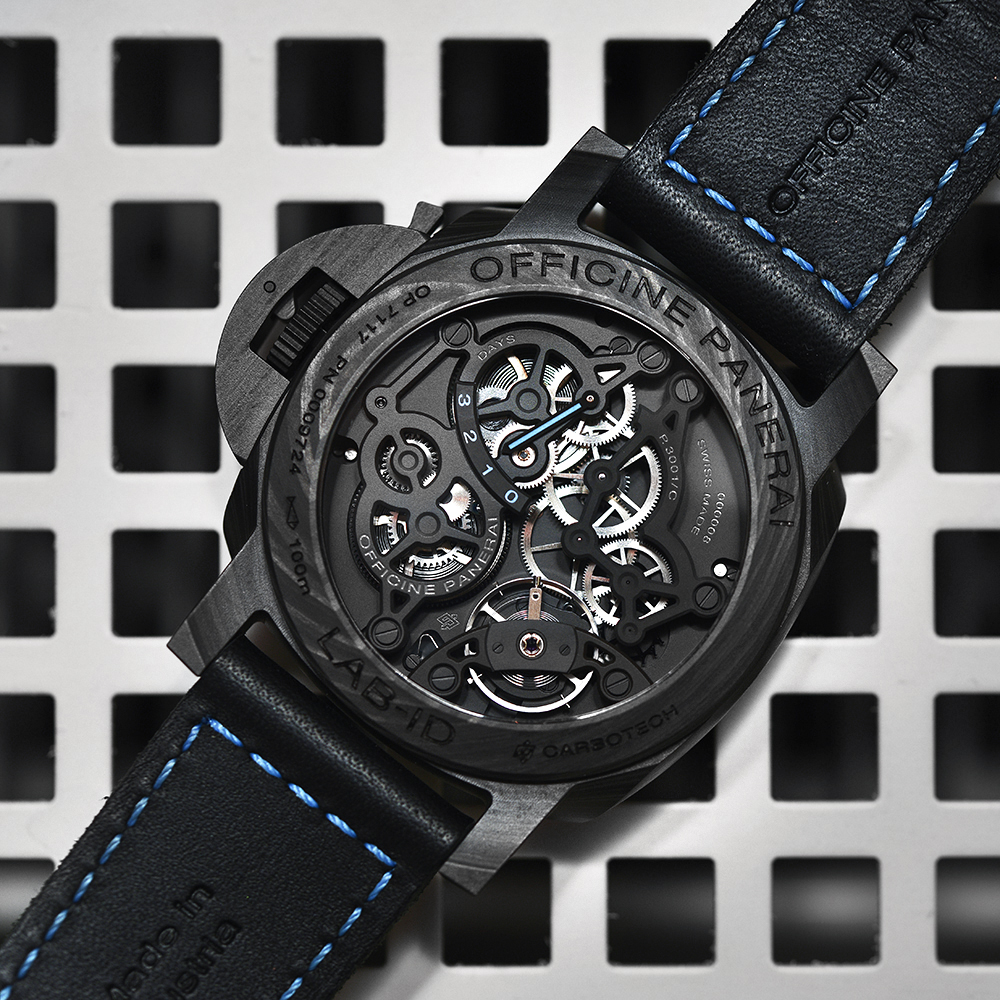
It’s true that the low-friction, oil-free concept isn’t something new in watchmaking. Back in 2007, Jaeger-LeCoultre released the Extreme LAB followed by the Master Compressor Extreme Lab 2, another watch that could operate without lubrication for its lifetime. The same can be said about a watch like the Cartier ID Two Concept we covered previously. What these pieces didn’t have was the 50-year guarantee, and while the Cartier concept remained a concept, the JLC is designed to grab attention and reflect its “overengineered” attitude both inside and out. This Panerai, however, isn’t really that different-looking from any other watch they make, save for the use of blue and other subtle hints. I like that it’s a watch you can actually ostensibly wear every day for 50 years without feeling self-aware about it – if you have wrists like Sylvester Stallone, that is.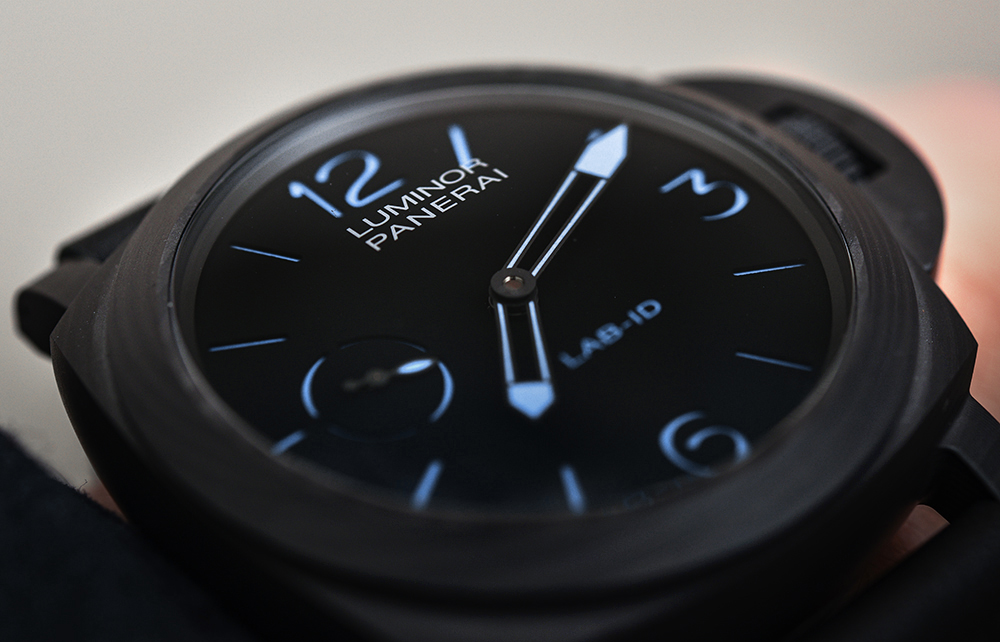
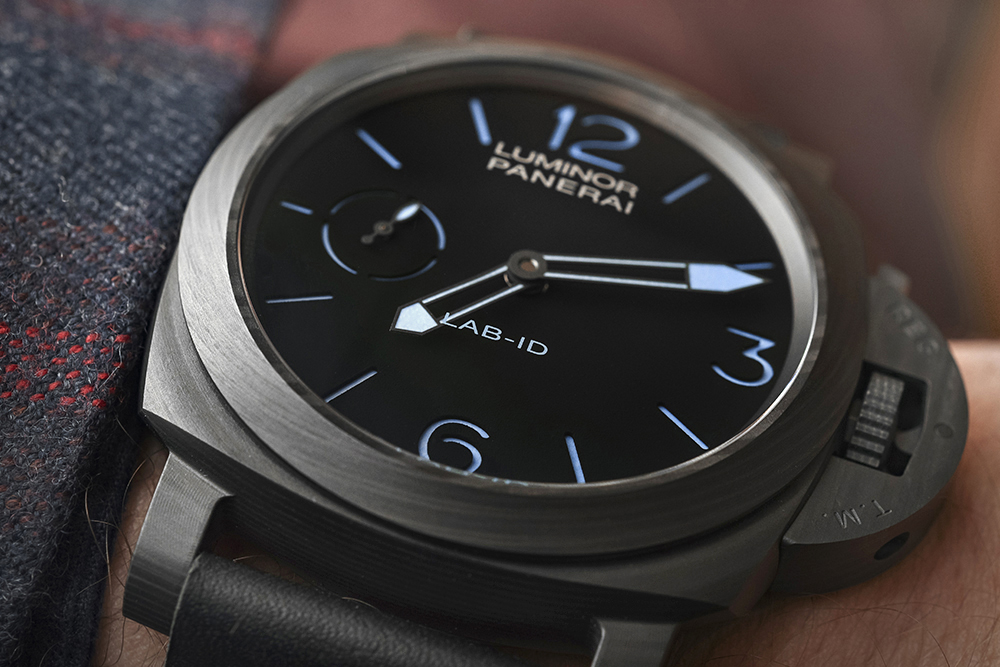
The Panerai LAB-ID Luminor 1950 Carbotech 3 Days PAM 700’s case is sized at a substantial 49mm. Much of the larger size is offset by the Carbotech’s characteristic lightweight features. It displays thick layers of the carbon fiber composite and, as I mentioned previously, this creates interesting visual effects with both the luminous blue and deep black tones on the dial. This layered effect even carries on into the crown-protecting device Panerai is known for. The matte finishing is also a nice inclusion to the watch’s stealthy and high-precision look. Additionally, the case boasts 100 meters of water-resistance.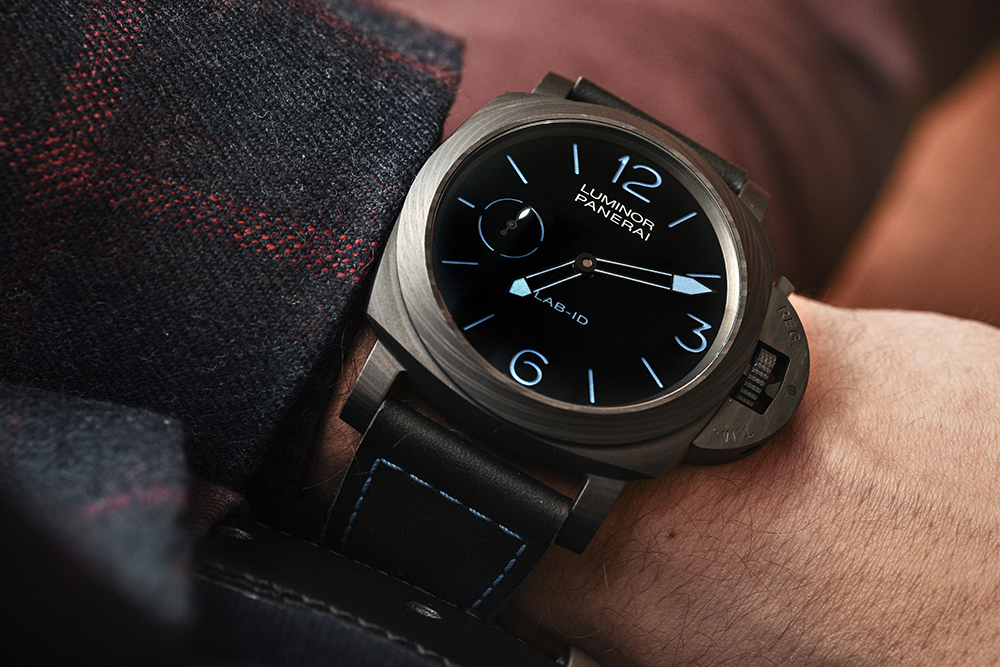
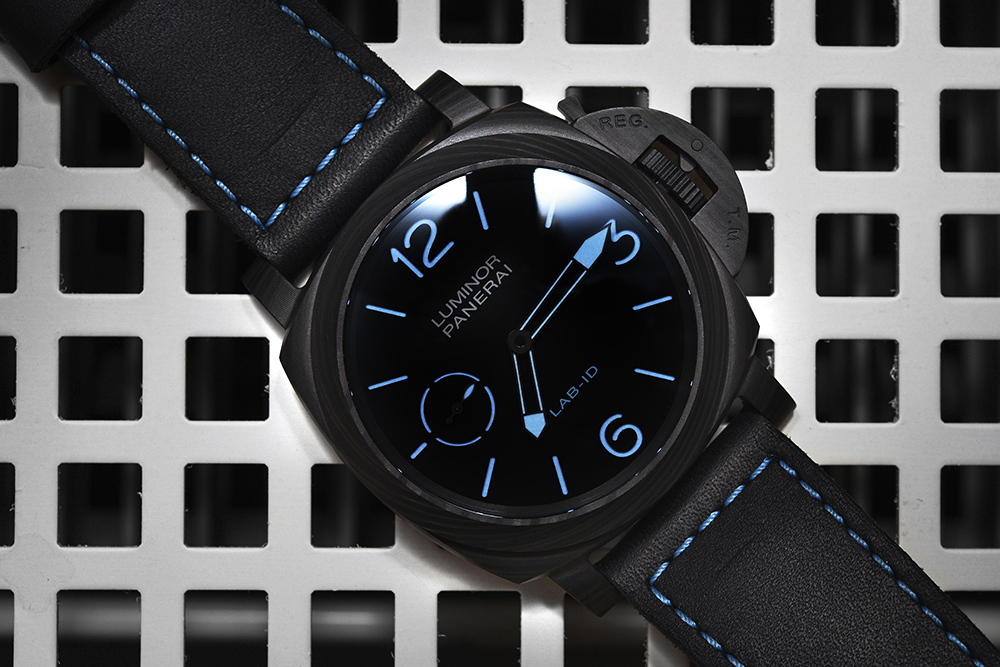
On the dial, Panerai uses carbon nanotubes meant to absorb any trace of light that hits it, resulting in a deep, deep black. The blue Super-LumiNova used throughout the numerals and markers on the “sandwich-style” dial pops against the black tone and is also incorporated into the hands. It almost reminds me of single beams of light piercing through miles of deep oceanic abyss. Overall, I find the dial to be as legible as it gets considering its high contrast and massive size.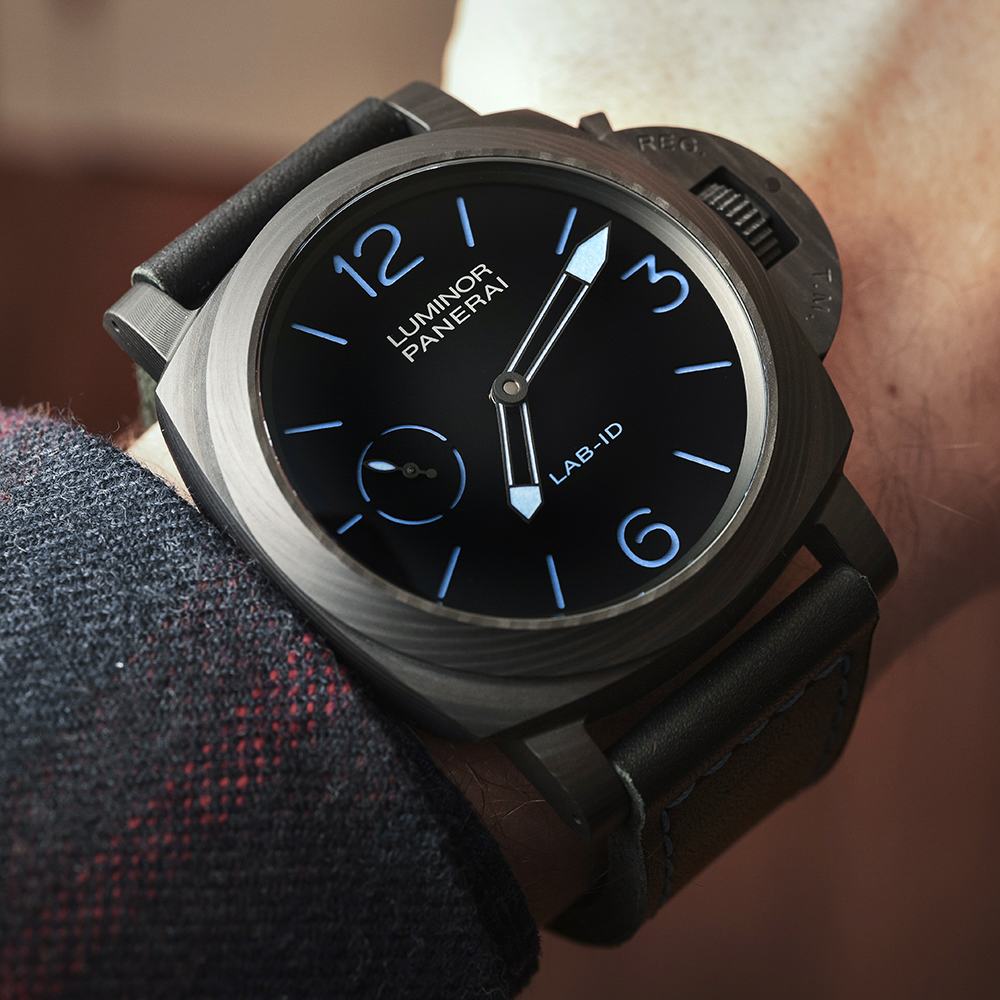
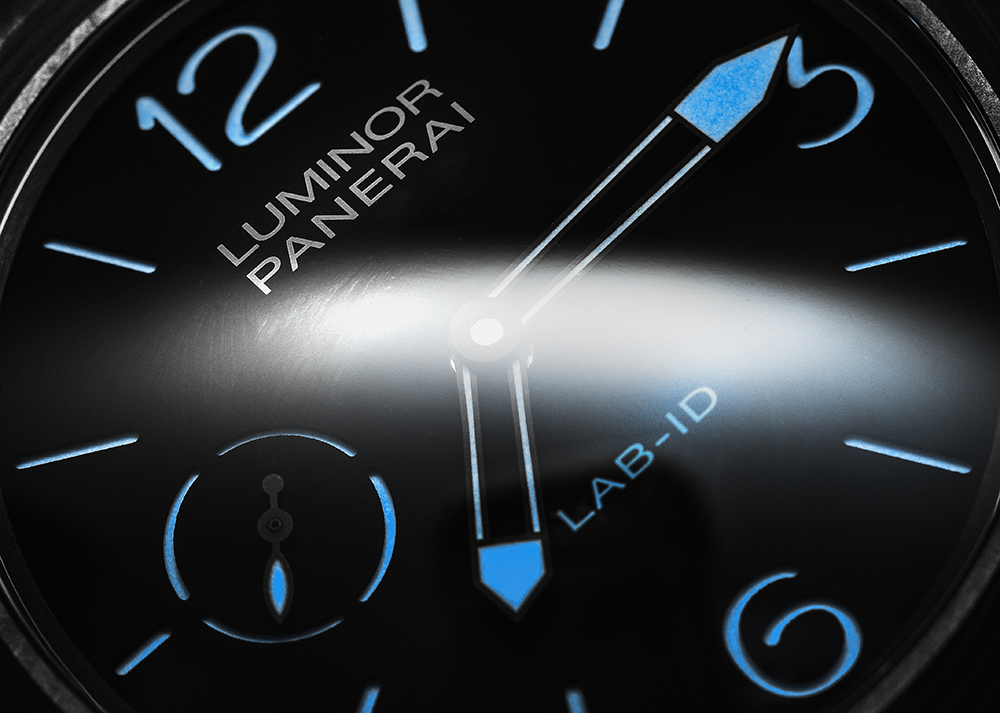
The crystal itself has the text “Luminor, Panerai, LAB-ID,” printed directly onto it, and I think this is where some people might find issues with the watch. Because the text is printed onto the crystal itself, it will inevitably get in the way of the hands, which could throw some people off when trying to read the time. Personally, I find that it serves as an interesting solution to the fact that Panerai could not print text on the carbon nanotube dial. Additionally, the crystal features double anti-reflective coating.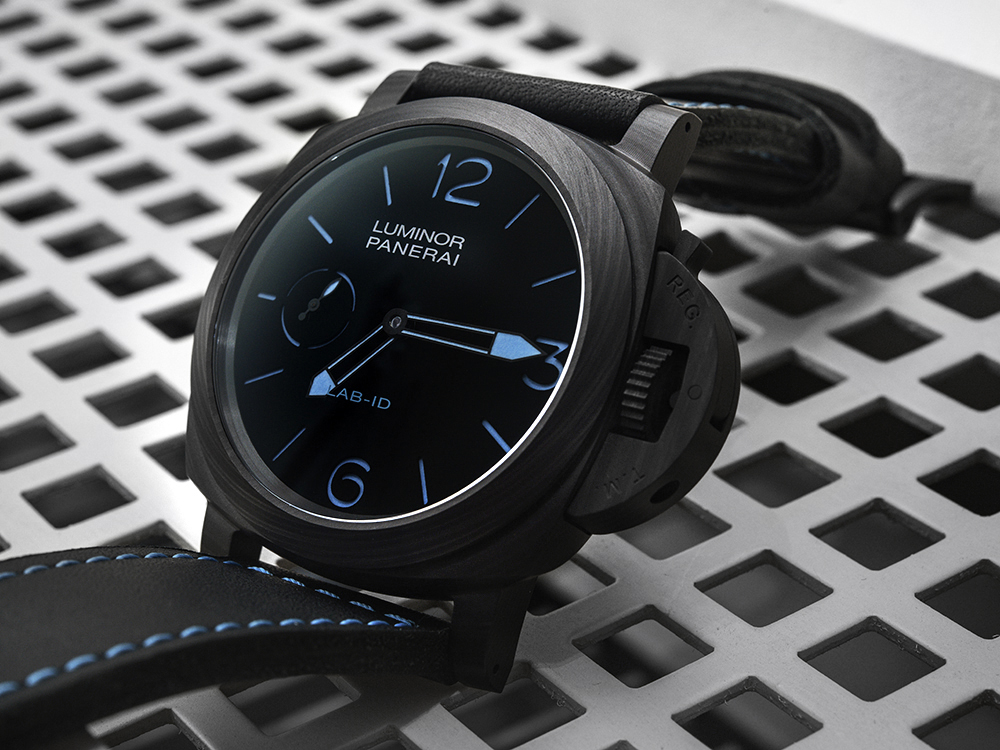
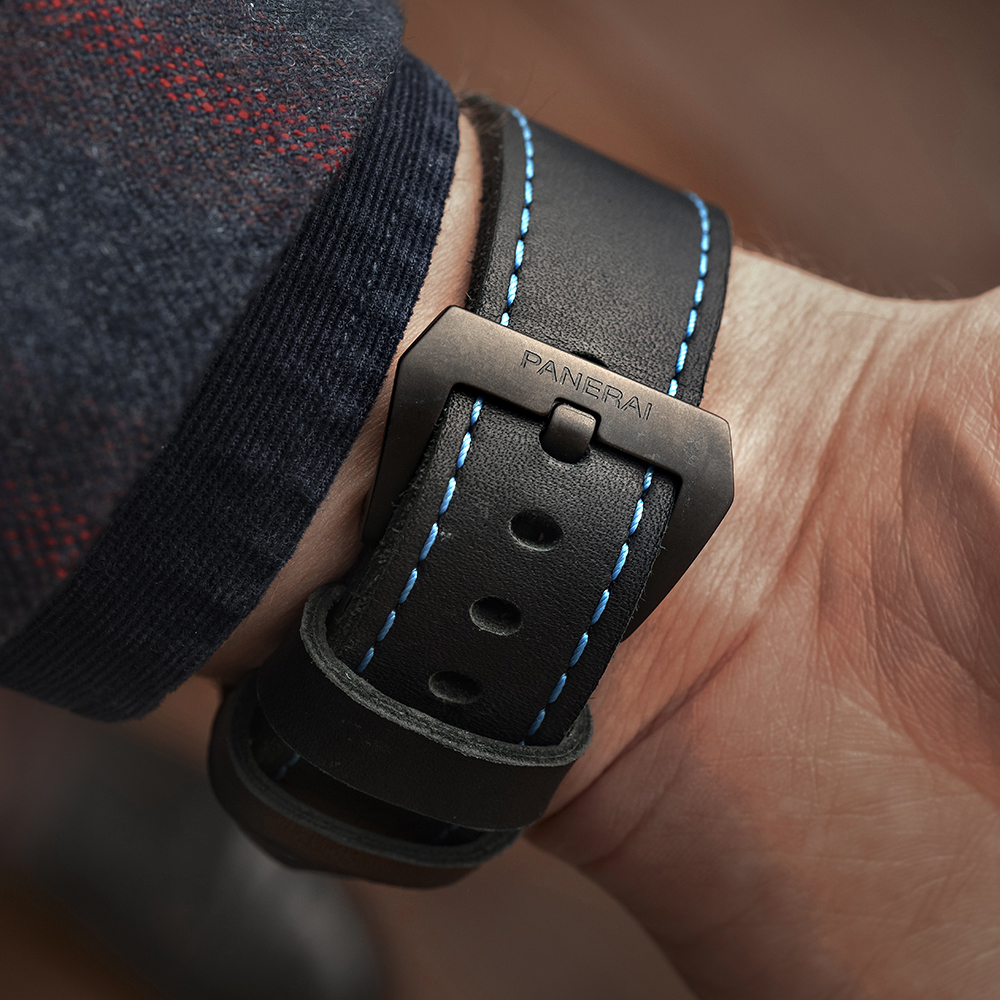
Taking a look at the case back, we find the caliber P.3001/C in all its deep, dark glory. One of my favorite features is the power reserve indicator that uses the same blue accents found on the dial. Power reserve is three days and the movement operates at 21,600vph. For convenience while time setting, Panerai included a seconds reset function that returns the seconds hand to the 12 o’clock position. It’s a feature that seems to grow increasingly popular and is definitely something I can appreciate.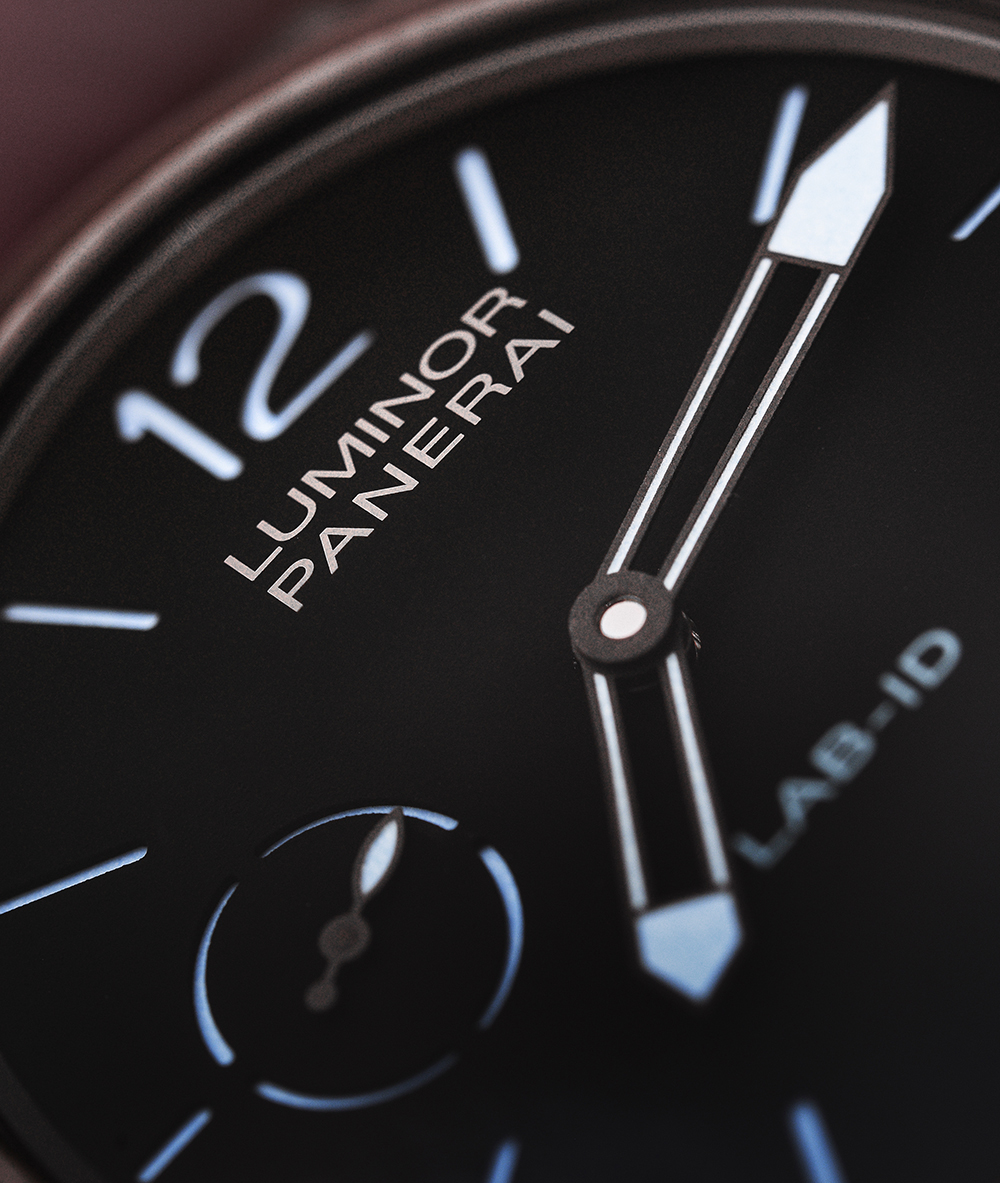
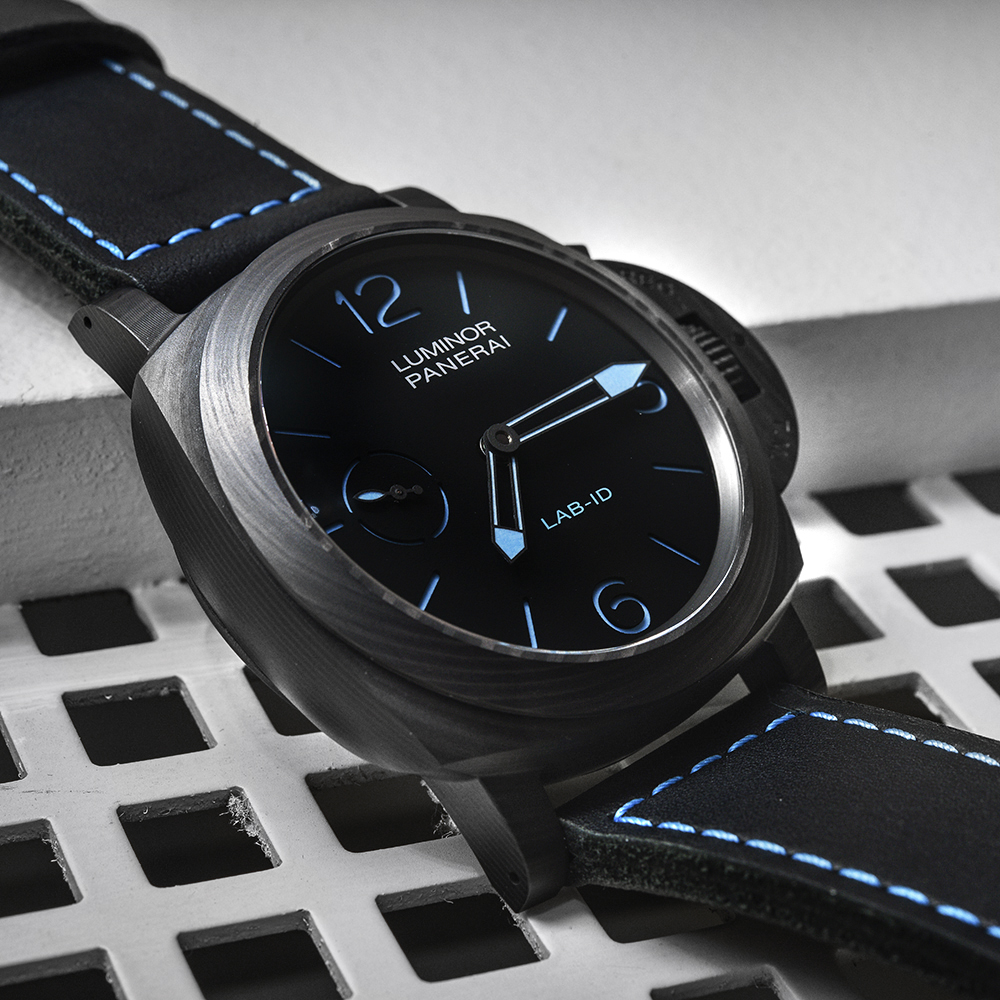
No surprise here, the strap on the Panerai LAB-ID Luminor 1950 Carbotech 3 Days PAM 700 carries the black and blue scheme. The same dark tones found throughout the watch carry on all the way through the buckle and the blue contrast stitching ties together the look.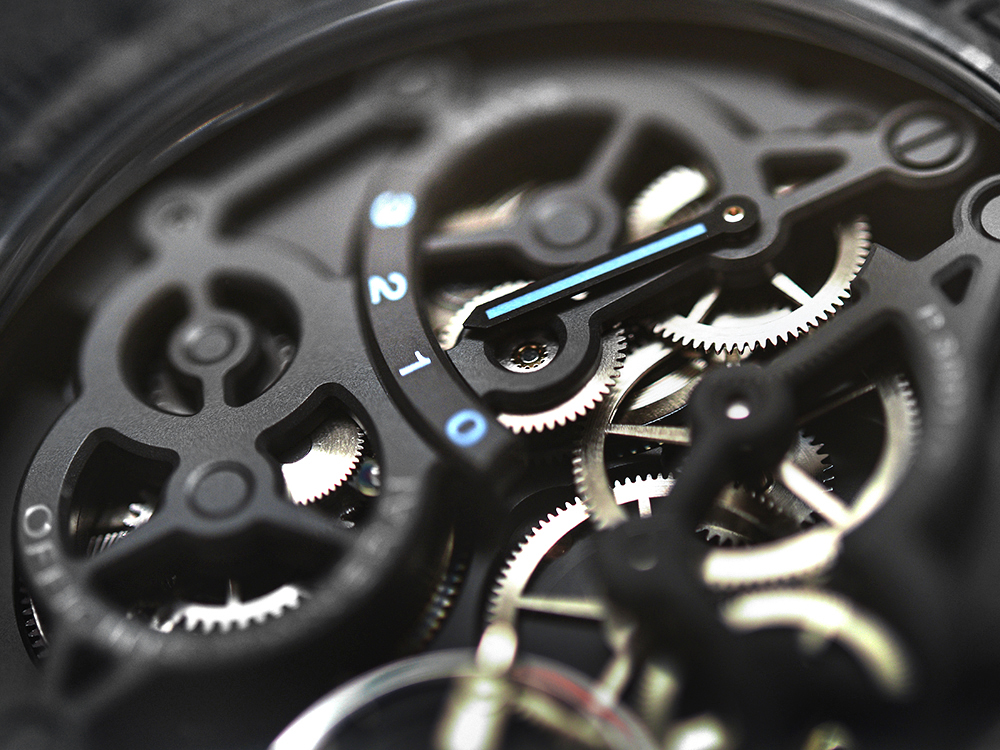
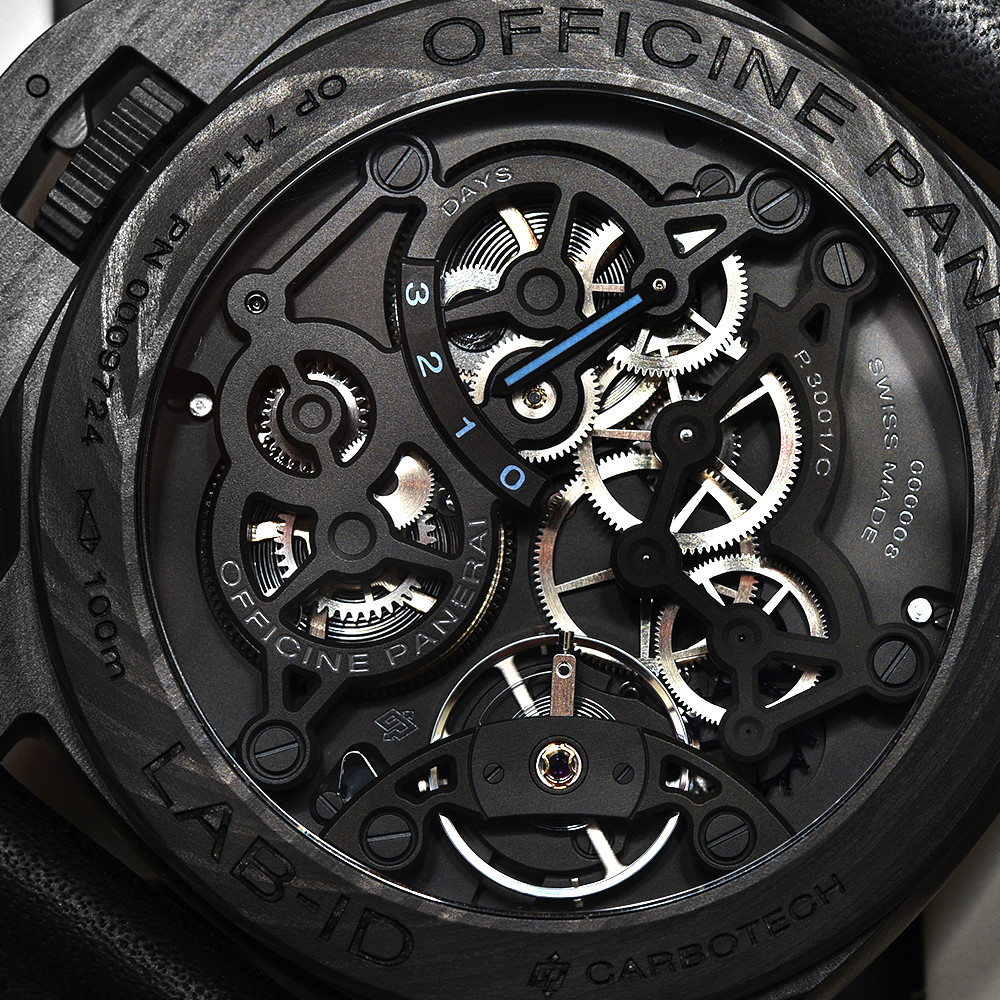
The use of innovative materials and movement architecture to cut down on the need for servicing is an area where the industry still has a long way to go before implementing these technologies on a larger, more accessible scale, but I think the Panerai LAB-ID Luminor 1950 Carbotech 3 Days PAM 700 marks a notable step. If my math is correct, routine and minor service costs for the average Panerai could potentially add up to around $8,000 over the span of 50 years. It’s a figure that falls way short in terms of justifying this particular watch’s price, and there are still a few areas (magnetization, for example) that I’m not sure about. But hey, I have a feeling that the buyers of these delicate copy watches probably aren’t doing that math in their head to justify the cost, but rather enjoying the watch and tracking its 50-year promise.


